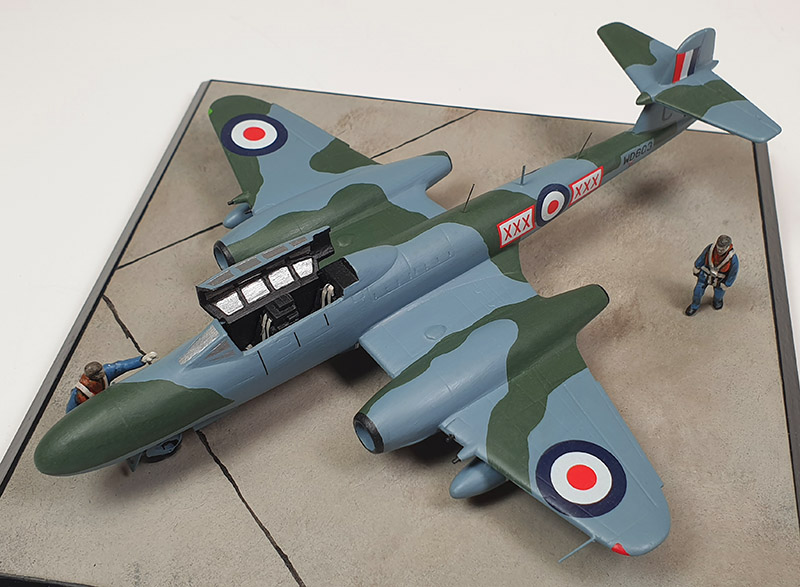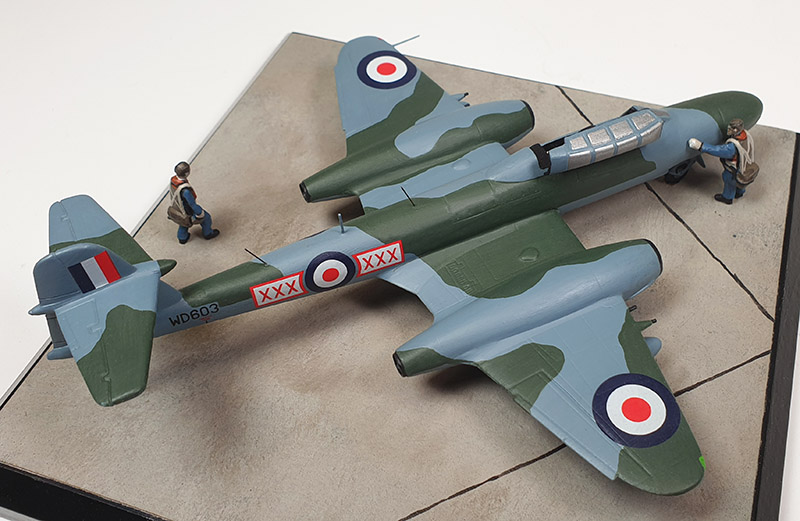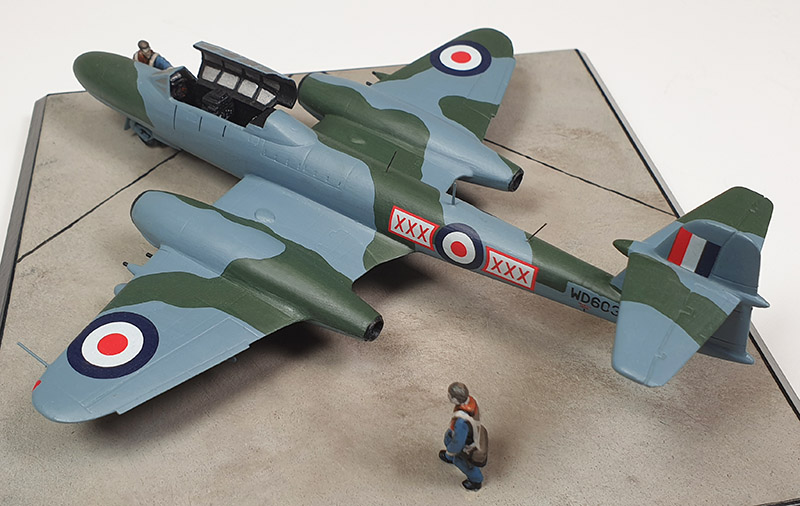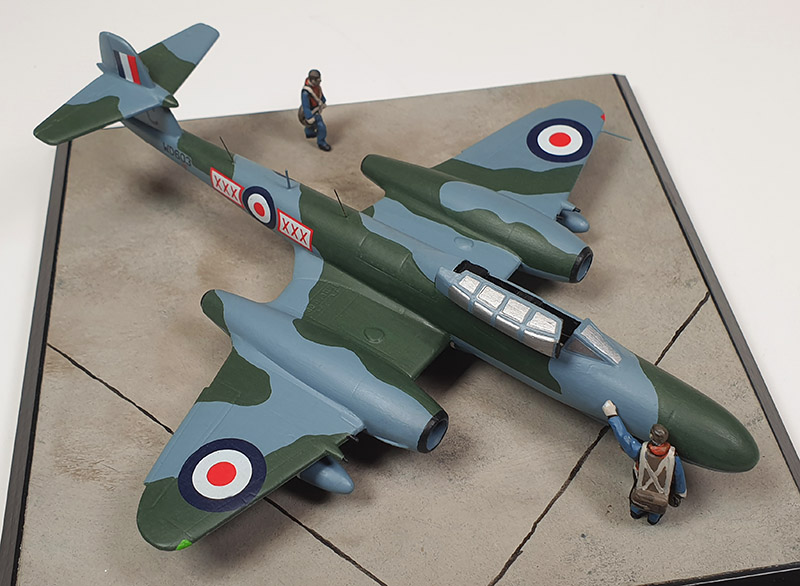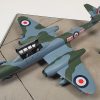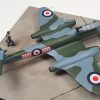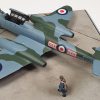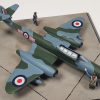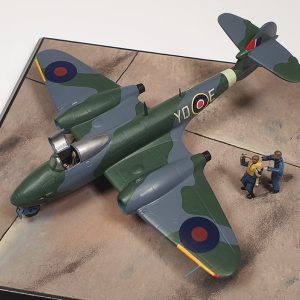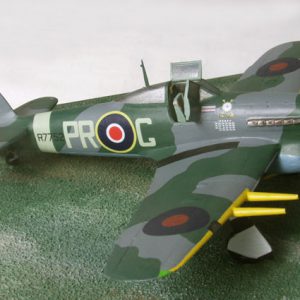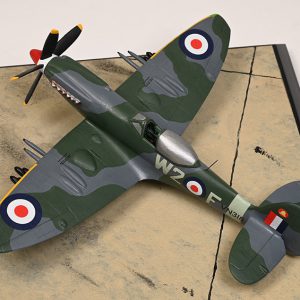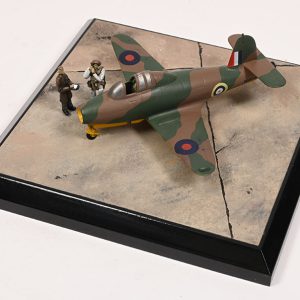Armstrong Whitworth Meteor NF Mk 11 WD603 C
29 Squadron RAF, Tangmere, 15 July 1953
From Air Ministry Specification E.28/39 Glosters designed and built the first British jet aeroplane; while provision for 20 mm cannon armament was included it but it was never incorporated. The follow-up F.9/40, devised and issued before the little Gloster had flown in May 1941, was for a cannon-armed combat aircraft which was to be twin-engined to achieve the necessary speed on the limited thrust expected to be available from the early turbines. This became the Gloster G.41, with its twin powerplants widely spaced not least to avoid damage to one engine should there be a serious failure in the other. The first prototype to fly, on 5 March 1943 at Cranwell, was DG206/G with two Halford/de Havilland engines – early aircraft used a variety of engines – with the first production Meteor F.1 EE210 with Rolls-Royce Wellands flying on 12 January 1944. 616 Squadron took delivery of its first Meteor on 12 July 1944; the aircraft’s principal use until the war in Europe ended was the pursuit and destruction of V.1 “Flying Bombs”, though the squadron did have a detachment in Belgium in early 1945 which led to some air-to-air combat.
Development led to increasingly powerful Rolls-Royce Derwent engines, canopies with improved vision, “clipped” wings and a new tail unit; with all these incorporated the Meteor F.8 became the backbone of the post-war Fighter Command. In 1946 Glosters built a two-seater based on the F.4 for demonstration to overseas customers, and the Air Ministry wrote Specification T.1/47 around it for RAF procurement; the tandem layout added a longer nose and a heavily framed canopy. It was to this mark that Glosters turned in response to Specification F.24/48; although Specification F.4/48 had been issued for a more advanced night fighter to replace the Mosquito NF.36 – this eventually became the Javelin – there was an evident need for an interim solution and an AI.Mk.10 radar was added to the nose of the T.7, and the longer-span wings similar to those of the PR.10 were fitted. With Glosters heavily involved on the next generation development, design and production of the Meteor night fighter was passed to fellow Hawker-Siddeley Group company Armstrong-Whitworth, who were already building F.8s, and with these changes converted T.7 VW413 flew at Bitteswell at the beginning of 1949 with a metal nose.
Shortly after its early flights an F.8 tail replaced the earlier style on VW413, and the first full prototype Meteor NF Mk 11, WA546, flew on 30 May, 1950. The standard four 20 mm cannon armament, displaced from the nose by the AI.Mk.10 radar, was installed in the outer wing panels, and pressurisation was added to the cockpit. 29 Squadron accepted the first production NF.11, WD585, on 29 August 1951 – it was to be the last as well as the first squadron to fly the Meteor NF Mk 11, replacing it in 1957 with the Javelin FAW.6 – and by the time WM403 left the production line in 1954 341 NF.11s had been produced for the RAF; this mark also served Belgium, Denmark and France. “Tropicalised” NF.13s served in the Middle East both with the RAF and air forces of Egypt, Israel and Syria. Further development added the American APS.21 radar in a slightly longer nose and with added fin area to produce one hundred NF.12s, and a further hundred were produced with a clear view canopy for the two occupants as the NF.14, the last delivered in May 1955. WD603 joined the Squadron on 29 August 1951, but was lost on 20 October 1953 when running out of fuel it was ditched in the English Channel eight miles south of the naval air station at Ford.
29 Squadron’s aircraft first carried a series of red Xs in the mid-1920s, with four on either side of its Gloster Grebe single-seat fighters; this was reduced to three on the succeeding Siskins. On the Hawker Demons, the first of several two-seater fighters flown by the squadron, one X was applied either side of the fuselage roundel, but the approach of hostilities eliminated all such colourful markings. In the ‘fifties WD603 was an early delivery to 29 Squadron in the same dark green/medium sea grey night fighter colours of the Mosquito NF.36s that it replaced, and with the jets the squadron revived its red XXX marking; initially this was applied over the camouflage background, but was then on a red-edged white rectangle. There have been several accounts of the genesis of this marking; the most generally accepted account – or perhaps legend – is that the CO of the day when “Roman” numbering was not unusual gave instructions to apply “ X, X and one X”, with the result that has become familiar in one form or another on all the unit’s subsequent aircraft and survives today on 29’s Typhoons.
On the 15th of July 1953 WD603 flown by F/L L. R. Schofield and F/L Davis together with eight more Meteor NF Mk 11 represented 29 Squadron for the Coronation Review Flypast at RAF Odiham in honour of Her Majesty Queen Elizabeth II. A static display of some 300 aircraft was also present for inspection. The flypast was the culmination of the day’s events and featured the latest RAF types including the Vulcan, Victor and Valiant.


